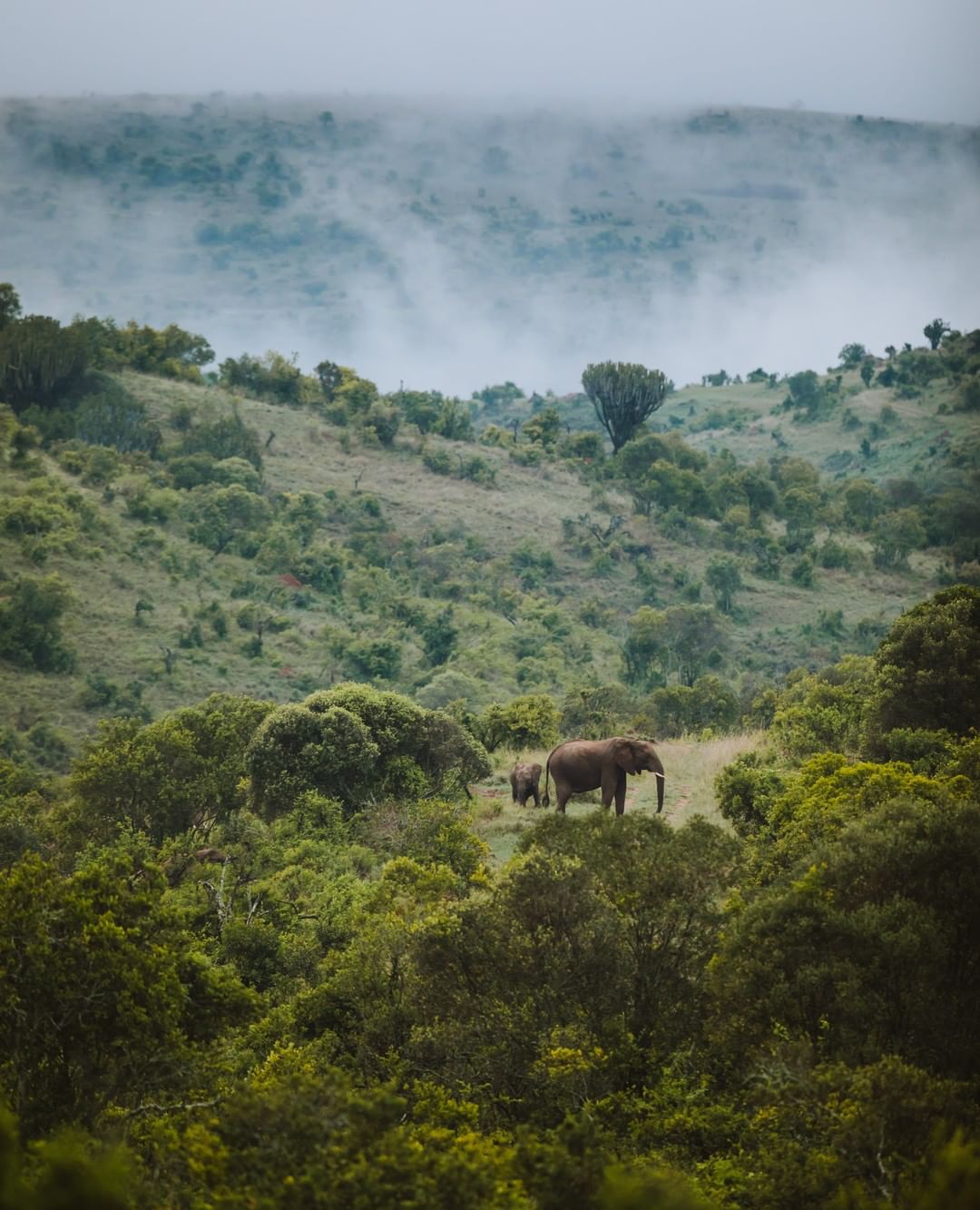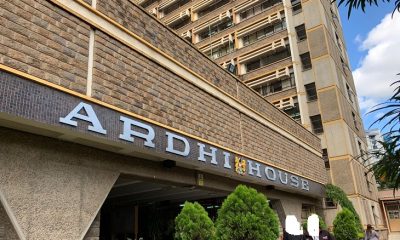News
What’s In A Fence? Inside The Big Fight In 50,000-Acre Laikipia Conservancy
The original owner of Lolldaiga Conservancy, Mr Robert Wells, surrendered a big portion of the land to a Kenyan Trust which was acquired through fundraising initiated by The Nature Conservancy (TNC) in 2021, but kept on lease some 4,000 acres with restrictions on development to protect wildlife and the environment in case new owners chose to use it differently.

What you need to know:
- Farmers bordering the conservancy and who now find themselves in the middle of the fence controversy are worried over the disturbances that now threaten the tranquillity that has existed for over six decades.
- But the group of seven settlers are opposed to the design of the fence which has been approved by the National Environment Authority (Nema).
Straddling the heartland of Laikipia plateau, the 50,000-acre Lolldaiga Conservancy overlooks the scenic Mt Kenya and provides a rolling view of the Aberdare Ranges.
Home to the big five, the conservancy is an irresistible environmental gem for nature lovers.
Famed for providing training grounds to the British soldiers during their routine military exercises, it borders Ol Jogi Conservancy to the northwest, Ole Naishu ranch to the east and boasts of being home to unique species of wildlife.
Over the years, this 96-year-old wildlife sanctuary and cattle ranch located some 30 minutes’ drive from Nanyuki Town has played host to tourists, environmentalists and researchers, all attracted by its rich menu of fauna and flora.
Then there is the Timau River, tucked between the conservancy and some landowners on the south, which has sparked the current controversy.
It snakes northwards from Mt Kenya, draining its waters into the famed Ewaso Ng’iro river. The ecosystem along this river is known as the Lolldaiga Valley.
Watching the valley from atop a rock presents such a panoramic and scenic view, with palpable tranquillity and tremendous beauty.
It is this heavenly beauty that perhaps informed the setting aside of thousands of acres along the valley and opened it up to investors who are expected to put up homes and other investments.
The original owner of Lolldaiga Conservancy, Mr Robert Wells, surrendered a big portion of the land to a Kenyan Trust which was acquired through fundraising initiated by The Nature Conservancy (TNC) in 2021, but kept on lease some 4,000 acres with restrictions on development to protect wildlife and the environment in case new owners chose to use it differently.
Property on the 4,000-acre piece of land is pricey, with a 10-acre plot going for about Sh30 million as opposed to land on the south where it is sold for Sh500,000 an acre. Land is also sold in huge chunks of between 10 and 100 acres, making it a preserve of the super-rich with any development restricted to specific environmental principles, which also comes at a price.
But before Mr Wells surrendered part of the conservancy, some settlers had acquired adjacent pieces of land at the southern tip totalling about 100 acres, which they purchased from the local community.
Today, the seven settlers are referred to as the Lolldaiga Southern Border Landowners (LSBL) and they have been living there for over 10 years.
However, a proposed electric fence intended to keep wild animals on the side of Lolldaiga Conservancy is at the centre of a major controversy with authorities terming it a security threat.
Farmers bordering the conservancy and who now find themselves in the middle of the fence controversy are worried over the disturbances that now threaten the tranquillity that has existed for over six decades.
But the group of seven settlers are opposed to the design of the fence which has been approved by the National Environment Authority (Nema).
The Lolldaiga landowners are demanding that the 16km fence takes a zigzag design so that it crosses the Timau River at some point. They have lodged an appeal before the National Environmental Disputes Tribunal seeking to have the licence issued by Nema revoked.
In their objection, the developers, who include Dr Hilde Van Leuwee, Ms Susan Weeks and Ms Ashminder Kaur, argue that a six-strand fence on three feet poles with a 14cm spacing restricts movements of small wildlife, which puts them at risk of death since they would not access River Timau waters.
“No one is opposed to the erection of the fence, but our concerns are about a harmful fence and route and the good fence. The harmful fence kills wildlife, destroys biodiversity, leads to loss of millions of Timau River conservation funding and destroys some 4,500 acres of unique biodiversity that is on both sides of the river,” argues Mr Abdi Dara, one of the LSBL members who have lodged the petition.
Mr Dara, a former director of the National Water Harvesting Authority, claims that the “good fence” is backed by a number of Environment Impact Assessment (EIA) reports including one by the Laikipia County Government and Mt Kenya Trust, an organisation engaged in the conservation of the Timau river riparian.
But those behind the construction of the solar-powered fence, the Lolldaiga Valley Conservancy (LVC), a group of investors that acquired the 4,000 acres, say they have the blessings of all government agencies to continue with the work that has now stalled pending the outcome of the petition at the environmental tribunal.
The erection of the fence by the conservancy has also come as a relief to residents of some of the villages bordering the wildlife conservancy owing to perennial human/wildlife conflicts leading to deaths, mauling of domestic animals and destruction of farm produce by invading wild animals.
“I have lived here for the last 36 years and have not known peace due to elephants invading my farm at night to destroy crops. It is not possible to quantify the loss I have incurred but it runs into millions of shillings,” says Mr Peter Njuguna from Nginyei village.
Filing of the petition has angered an estimated population of more than 15,000 people living in Nginyei, Akoriono, Mugumo, Muramamati and Timau areas in Umande Ward who are now seeking the intervention of the Ministry of Interior, the Laikipia County Government and their elected leaders.
The farmers also claim that the landowners in the south have blocked some roads, denying the locals access to River Timau, the main source of water for domestic use and livestock.
“They bought the land from the community a few years ago but they now want to also own the river. By opposing the fence and blocking access roads, it is clear they want to make our lives difficult so that they can push us into selling land to them at throwaway prices to enable them to venture into tourism business under the guise of environmental conservation,” argues Mr Wilson Kung’u, the chairperson of the Daiga location community.
Area MCA Daniel Mugweru maintains that Lolldaiga landowners are involved in illegal tourism and now want relevant authorities to probe the claims, pointing out that as the reason they want the fence constructed in a way that would allow wild animals to stray out of Lolldaiga Conservancy into their areas of settlement.
The MCA questions the logic behind the seven land owners preventing the construction of a fence.
He points out that there are enough water springs within the conservancy and that the wild animals do not depend on waters from River Timau, which normally has no water during dry seasons and no reported cases of animals dying because of lack of water.
But landowners deny they intend to diversify into tourism business, arguing that they are concerned with conservation of the River Timau ecosystem, which they claim is now under threat.
“It is not fair for anyone to allege that we are operating illegal tourism within our residential areas. If someone is doing something wrong, then let the authorities deal with it in accordance with the law. Those are just malicious attacks bordering on incitement,” says Mr Dara.
During a meeting in early November at Nginyei village, Laikipia East MP Mwangi Kiunjuri accused the landowners of being insensitive to the plight of residents regarding human/wildlife conflict.
“Residents of Ndaiga have been living here for over 60 years and we have always welcomed visitors. The few who purchased land recently and are now calling themselves champions of the environment should know that we have preserved this environment for decades and we shall not entertain anyone infringing on our rights,” Mr Kiunjuri said while calling on relevant government agencies to intervene and resolve the impasse.
Laikipia Governor Joshua Irungu and his administration has also weighed in on the matter and called for President William Ruto to intervene.
Laikipia County Commissioner Onesmus Kyatha confirmed that the simmering conflict was a security threat, saying he had reached out to various government departments and agencies to try resolve the matter.
“We have formed a multi-agency team to look at the matters being contested and I have asked the affected residents to stay calm as we seek ways to resolve the issues,” he said at his Nanyuki office.
The multi-agency team that brings on board a representation from national and county government is set to carry out a road surveying exercise in parts of Umande Ward to establish if some landowners have encroached on road reserves.
Maj Gen (Rtd) Anthony Arap Rop who has lived at Koita village for 70 years says they hope the dispute will be resolved amicably, adding that their concern is the preservation of rivers draining into River Ewaso Ng’iro.
The former senior military officer, who serves on the board of Ewaso Ng’iro North Development Authority (ENNDA), says the landowners have come up with an ecosystem conservation plan to be applied by all those living next to the riparian to protect the river’s ecosystem.
“We appeal to the county government and the relevant government agencies to help in conforming to the legal norm of agriculture, but unfortunately some people are cultivating on the riparian land. On the fence erection, we leave that to the experts – KWS (Kenya Wildlife Service) and KFS (Kenya Forest Service) – to give the necessary technical advice,” Mr Rop said in an interview.
Kenya Insights allows guest blogging, if you want to be published on Kenya’s most authoritative and accurate blog, have an expose, news TIPS, story angles, human interest stories, drop us an email on [email protected] or via Telegram
-

 News2 weeks ago
News2 weeks agoKenyan Driver Hospitalized After Dubai Assault for Rejecting Gay Advances, Passport Seized as Authorities Remain Silent
-

 Investigations1 week ago
Investigations1 week agoMoney Bior, Lawyer Stephen Ndeda Among 18 Accused Of Running An International Fraud Ring Involved With Scamming American Investor Sh500 Million
-

 Investigations1 week ago
Investigations1 week agoNestlé Accused of Risking Babies’ Health in Africa with ‘Toxic’ Cerelac Product Sold Highest in Kenya
-

 Business2 weeks ago
Business2 weeks agoConstruction Of Stalled Yaya Center Block Resumes After More Than 3 Decades and The Concrete Story Behind It
-

 News1 week ago
News1 week agoTSC Announces Major Policy Shift To End Transfer Of Promoted Teachers
-

 News7 days ago
News7 days ago48-Year-Old Woman Who Pushed 25-Year-Old Boyfriend To Death From 14th Floor Kilimani Apartment Arrested
-

 Investigations3 days ago
Investigations3 days agoHow Land Grabbing Cartels Have Captured Ardhi House
-

 Investigations1 week ago
Investigations1 week agoKDC Rocked With Fresh Sh500 Million Tender Scam















